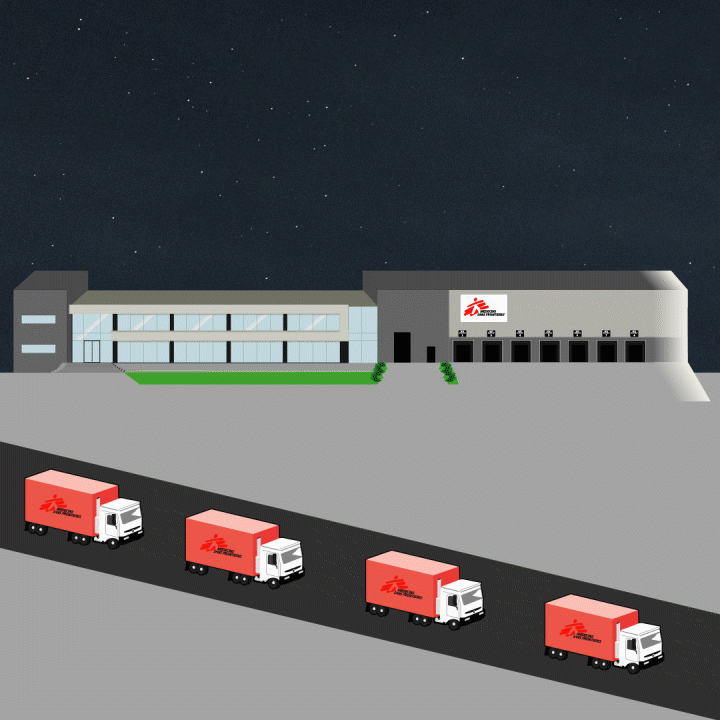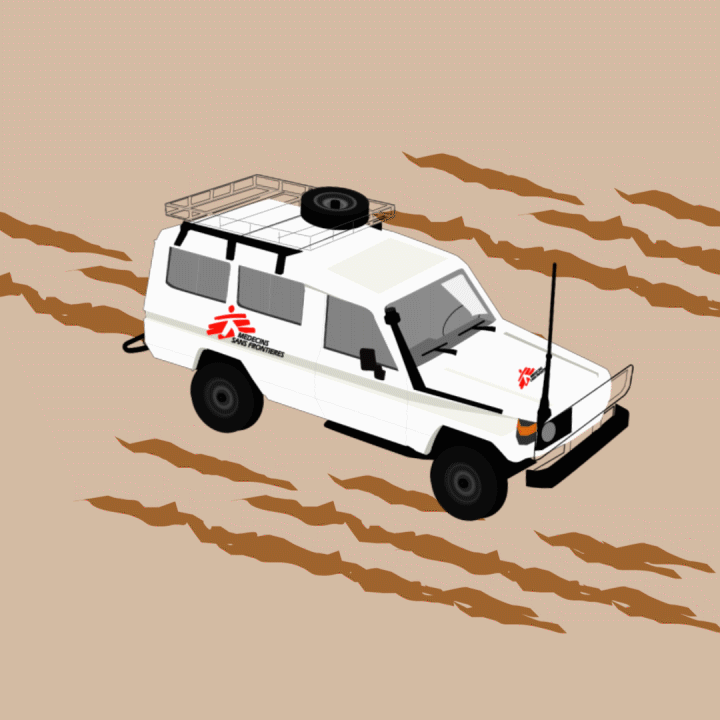Cold chain: The life-saving journey of a vaccine

How do you transport life-saving medicines that need to be kept cold – through jungles or even across deserts – to reach remote communities?
Each year, our teams vaccinate millions of people, mainly as an outbreak response to diseases such as measles, meningitis, diphtheria, pertussis or whooping cough and yellow fever.
But transporting and storing vaccines in a ‘cold chain’ in the tropical heat of many countries where Médecins Sans Frontières/Doctors Without Borders (MSF) works is an immense challenge and a major cause of poor immunisation rates.
What is a 'cold chain'?
Today, nearly all vaccines are recommended to be kept between 2°C to 8°C from the point they are made until they reach the recipients. At all times.
A vaccine’s stability can be compromised through, for instance, exposure to temperature variations. And if this happens, the vaccine may lose some or all of its effectiveness (or, in medical terminology, its efficacy).
Maintaining a continuous cold chain in resource-limited places where power supply is unreliable, or even non-existent, is a considerable task.
The GAVI Alliance, which supports the rollout of new vaccines in low- and middle-income countries, estimates that half of the healthcare facilities in the poorest countries have no electricity supply at all, with only 10 percent having a reliable electricity supply
New tools such as solar refrigerators, and older ones such as kerosene refrigerators, can certainly help. But they are very expensive and maintaining them is also a challenge.
"The closer to the patient, the more critical transport can become. In DRC, for example, large cold boxes are hand-carried over rough paths which sometimes need to be cleared of vegetation, or include river crossings, in order to reach the vaccination sites."
How does the MSF cold chain work?
1. Vaccines are stored in a refrigerated area of our large stock warehouses. In Brussels, the warehouse is 7,000 square metres and contains everything from medicines and vehicles, through to surgical tents and clothing.
2. The vaccines are transported by truck in an ice-lined fridge in case of a power failure.
4. The plane lands in country and the vaccines pass through customs.
5. Vaccines are taken to the central MSF stores, which can be anything from a warehouse to a small shed. The vaccines are placed in a refrigerated area or large fridge powered by a generator.
6. In the MSF project, the team decides what they need, and the logistician creates a stock request.
7. Stocks of vaccines are transported by MSF vehicle to smaller MSF projects in towns and countryside in a cool box.
8. In countries such as Democratic Republic of Congo (DRC), roads are often muddy and impassable for larger vehicles. In these situations, the coolboxes are placed on the back of motorbikes and taken deep into the countryside.
How do we fix the cold chain problem?
Growing evidence shows that some vaccines can be safely kept outside the cold chain for certain periods of time. This more flexible use of the cold chain is called the ‘controlled temperature chain’ (CTC) or a ‘flexible cold chain.’
This approach has many potential benefits, including cost savings, preventing vaccine damage caused by accidental freezing and, most importantly, making it easier to reach children living in remote places who would otherwise remain unvaccinated.
However, very few vaccine manufacturers have released information on, or further studied, the stability of their vaccines outside the typical recommendation of keeping vaccines at between 2 to 8°C.
This is in part because there is little to no need for a more flexible cold chain in wealthy countries, where refrigeration is unproblematic, and therefore there is little incentive for pharmaceutical companies to pursue the production of more heat-stable vaccines.
The ‘controlled temperature chain’
In practice, a controlled temperature chain allows a vaccine to be kept at ambient temperatures, up to a specified threshold (e.g. 40°C), for a limited time immediately before the vaccine is given.
Up until this ‘excursion’ from the cold chain, the vaccine should continue to be kept in the traditional 2°C to 8°C cold chain.
“In many places, you can often arrive at a health centre – a place that should be buzzing with children – to find it is totally empty, no staff or anything. You understand why when you see that the fridge to store the vaccines is broken and no child has been vaccinated in months.”
A CTC has huge benefits during vaccination campaigns in resource-limited places. Mass campaigns require the transport of hundreds or thousands of vaccine vials in cold boxes filled with frozen ice packs.
If vaccination campaigns could be freed up from these demands, it would considerably lift the burden on vaccinators who often have to walk long distances, carrying cold boxes to reach the most remote communities.
Without the need for cold boxes, more vaccines could be carried, and therefore more children vaccinated with the same amount of effort.
1,320,100
PEOPLE VACCINATED AGAINST MEASLES BY MSF IN 2019
197,700
PEOPLE VACCINATED AGAINST MENINGITIS BY MSF IN 2019







